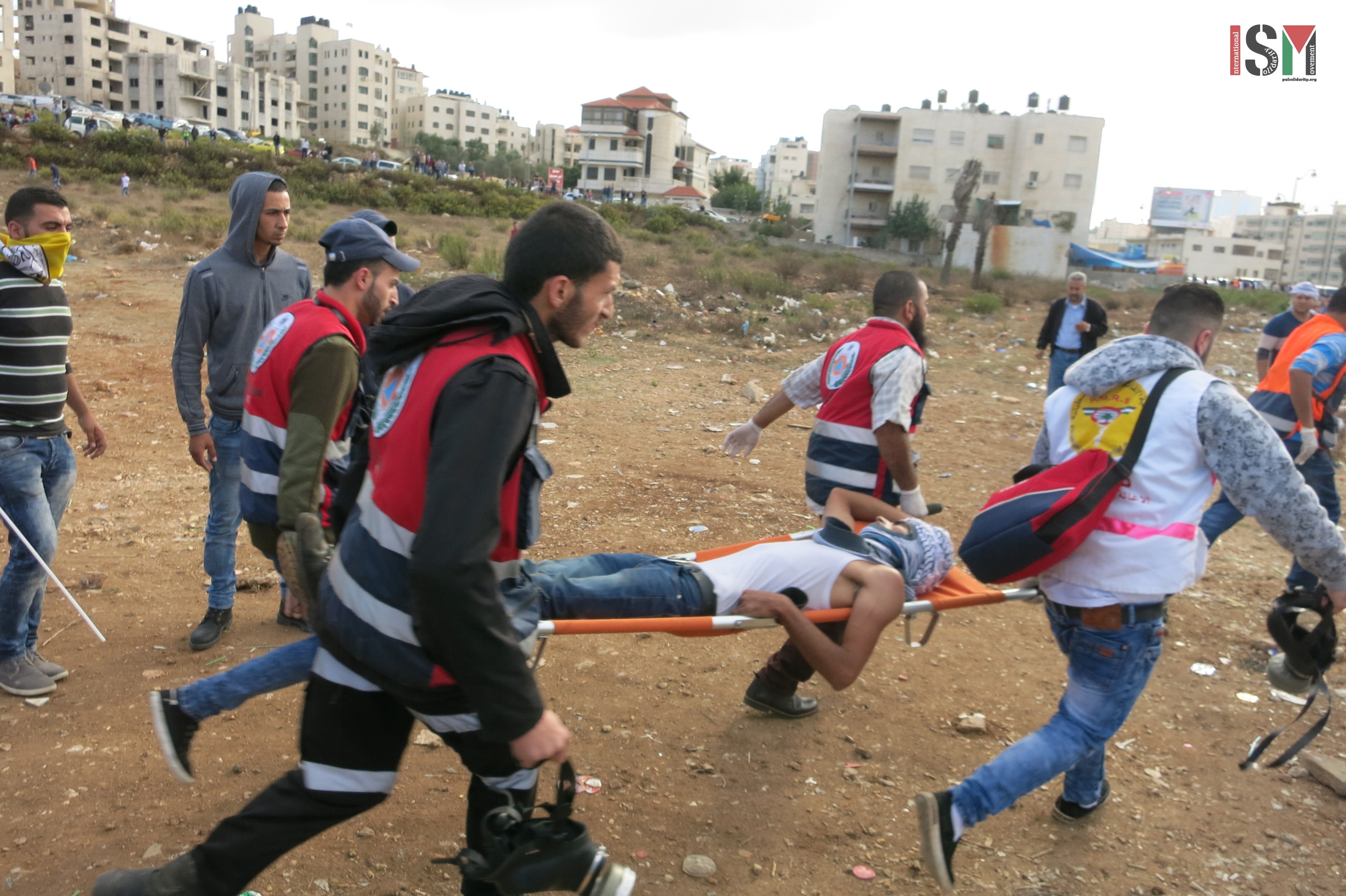Tag: Tear-Gas Canister
-
Non violent action by elderly Palestinian despite Israeli military violence
10th October 2015 | International Solidarity Movement, Al-Khalil team | Hebron, occupied Palestine Today on October 10th in Al-Khalil at around 13h, thousands attended the funeral of Mohammed Fares Mohammed Abdullah Al-Jabari, killed yesterday near Kiryat Arba at the hands of an Israeli police officer, after allegedly trying to stab him. After the funeral a…
-
Beit El demonstration under attack by Israeli forces after Martyr laid to rest
10th October 2015 | International Solidarity Movement, Al-Khalil team | Ramallah, occupied Palestine Less than one hour after the Halabi family laid their son, martyr Mohannad al-Halabi, to rest in a cemetery in Ramallah, violent confrontations broke out in the nearby Beit El area. In a continuation of the sharp escalation in violence seen across…
-
More Palestinians injured as Israeli forces violently attack mourners at a funeral in Bethlehem
6th October 2015 | International Solidarity Movement, Al-Khalil team | Bethlehem, occupied Palestine The funeral of the 13-year old Abed al-Rahman Obeidallah, who was shot and killed by Israeli forces on his way home from school yesterday, took place today in Betlehem with over a thousand attendees. They marched from the Beit Jala hospital to Abeds house…



